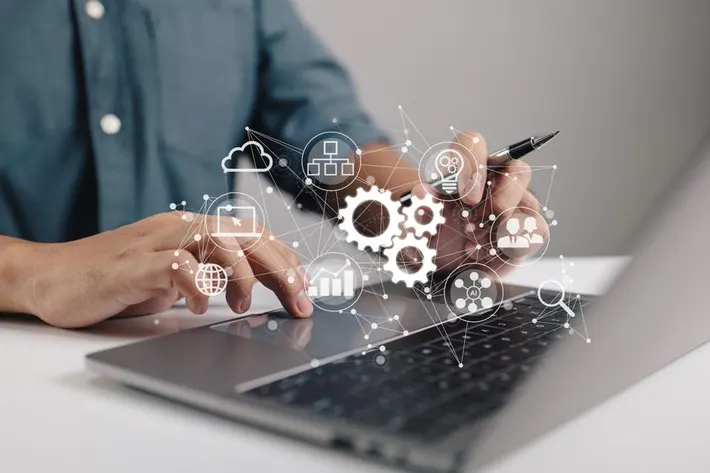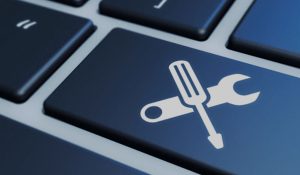Even the most organized professional can be thrown off track by an overload of emails, tasks, and distractions. Technology can streamline work processes, automate repetitive jobs, and keep the focus on what’s important. Digital tools can help you achieve more and reduce stress and fatigue while working. This guide will explore proven technology strategies to boost your productivity.
Email Management
Email management can help you save time each week and keep your mind clear throughout the day. Email scheduling tools let you compose messages in focused work sessions and then send them to recipients at the best time. Gmail’s scheduling features and Outlook’s delivery delay options allow you to maintain professional boundaries while working efficiently. Filters and rules sort incoming emails into designated folders to ensure important emails are given immediate attention, while newsletters and notifications remain organized. Unroll. I, for example, can remove unwanted subscriptions at once. This reduces the clutter in your inbox. By setting specific times to check email rather than responding all day long to notifications, you can avoid constant interruptions while maintaining deep work sessions.
Task Management Apps
Digital task management software provides clarity and structure to traditional to-do lists that is not possible with paper lists. Apps such as Todoist and Microsoft To Do have powerful features to organize projects, set deadlines, and track progress. These platforms are great at breaking down large projects into smaller tasks, which makes them feel more manageable. Priority labels, due dates, and sorting by urgency ensure that urgent items are given the attention they deserve without losing sight of longer-term goals. Collaboration features are available in many apps, which streamline team projects by eliminating the need for email updates. It’s important to choose a system that suits your preferences and use it consistently for both professional and personal tasks.
Automation Tools
Automating repetitive tasks saves time and mental effort. Zapier and IFTTT (If this, then that) connect apps and services to create automated workflows for routine processes. You can, for example, automatically save emails to cloud storage or create calendar events based on specific emails. Or, post social media updates simultaneously across multiple platforms. Text expansion tools such as TextExpander can turn abbreviations or short phrases into paragraphs. This is perfect for signatures and responses that are frequently used. Smart home devices automate environmental control, allowing users to concentrate on their work while the technology takes care of lighting, temperature, and background noise. These tools take some time to set up, but they can deliver productivity gains by reducing manual intervention.
Focus Enhancement
Digital distraction blocking tools can help you maintain focus during important work sessions. Apps such as Freedom, Cold Turkey, and Focus block distracting applications and websites for predetermined time periods. These tools are especially useful for long-term work sessions that require sustained attention. White noise generators and apps that cancel out distracting sounds create consistent audio environments. Pomodoro Technique applications help maintain high performance by dividing work into intervals of focused work and scheduled breaks. Browser extensions allow you to hide social media notifications and other distracting elements. You can still access the necessary tools. It is best to identify your own distraction patterns and implement targeted solutions.
Time Tracking
Understanding your actual time usage can reveal surprising insights into productivity patterns and inefficiencies. Apps like RescueTime, Toggl, and Clockify monitor and categorize computer activity. These data can be used to identify time-wasting programs, optimal working hours, and tasks that take longer than anticipated. Manual time tracking of specific projects helps to estimate future project timelines and provides accurate billing information. Professionals often discover that they overestimate certain tasks and underestimate others. This leads to more realistic planning. Weekly time reports reveal patterns such as energy peaks and troughs that can help you make better decisions about scheduling different types of tasks.
Cloud Collaboration
Cloud-based tools allow seamless collaboration, regardless of device or location preferences. Google Workspace, Microsoft 365, and other cloud-based tools offer real-time editing, versioning, and commenting systems, which eliminate the confusion caused by email attachments or multiple versions of files. Remote meetings are more productive when they use video conferencing platforms that allow screen sharing and recording capabilities. Slack, a project management platform, integrates with a variety of other tools to create centralized hubs that facilitate team communication and document sharing. Cloud storage solutions allow you to access important documents from any device, while automatic synchronization prevents data loss. These tools allow for flexible working arrangements that don’t compromise productivity or quality of collaboration.
Maximizing Your Tech-Driven Productivity
The greatest productivity gains from technology come not just from adopting new tools but rather from a thoughtful implementation. Start with the most annoying part of your workflow, apply the solution, and assess the results. Most productive professionals automate routine tasks to free up mental resources and allow them to focus on creative or strategic work, which requires human insight. Regularly evaluating your tech stack will ensure that tools are still serving their original purpose and not becoming a distraction or source of additional complexity.
FAQs
1. What is the first productivity tool you should start with?
Email management is the most immediate way to improve productivity, as professionals typically spend 2 to 3 hours a day on email. Within the first week, filters, scheduling, and designated checking time can save a lot of time.
2. How many productivity apps should I be using?
Instead of using dozens of specialized apps, focus on 3-5 core applications that work well together. Too many tools can create management overheads that negate productivity gains.
3. Do free productivity tools work?
Free tools are often robust enough for personal use. Paid versions usually add features like collaboration, advanced analytics, and customer service that are valuable when usage increases.
4. How long will it take for productivity to improve?
Simple tools such as email filters can show immediate results. However, habit-forming apps like time tracking or focused apps require 2-3 weeks of consistent usage before they begin to yield benefits.
5. How can I restrict certain productivity apps in my company?
You can work with your IT department to find approved alternatives or show how certain tools can increase security and efficiency. Most popular productivity software is available in enterprise versions that meet corporate security standards.




